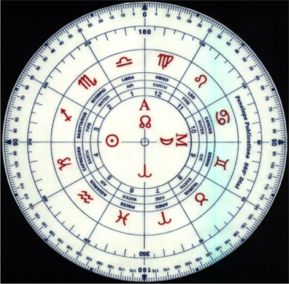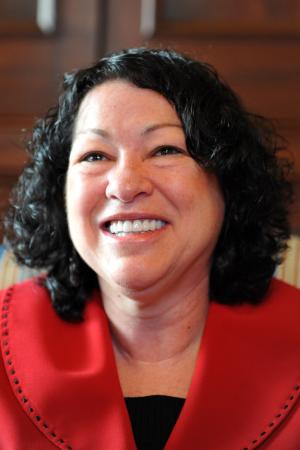by Lynn Hayes

The Sabian Symbols were originally conceptualized in a partnership between astrologer Marc Edmund Jones and spiritual medium Elsie Wheeler in the early part of the 20th century, and published in a book by Jones called The Sabian Symbols in Astrology. Channeled by Ms. Wheeler, there is one symbol for every degree of the zodiac, from the first degree of Aries to the 30th degree of Pisces. Jones was a Theosophist and therefore well acquainted with the concept of channeling Ascended Masters and the Babylonian Brotherhood.
According to
Diana Roche, Marc Jones was also influenced by the symbolic astrological degrees of a Welsh seer named John Thomas (called Charubel) which were “obtained psychically for the basic purpose of helping him rectify the ascendents [sic] of horoscopes.”
Astrologer Lynda Hill, a noted modern expert on the Sabian Symbols, writes that the symbols were called “Sabian” because of the connection that Jones felt to the “ancient mind matrix” of ancient Mesopotamia and that the Sabians were ancient alchemists. However, the website for the
Sabian Assembly, the group started by Jones back in 1923, says:
The Sabian Assembly has been in continuous formal existence since October 17, 1923. Selection of the term, “Sabian,” formally adopted in January, 1928, proved fortuitous on a number of counts. “The students themselves picked the word Sabian, which was lucky because it afterward turned out that the Sabians were a Mohammedan group, and nobody knew just what they were. It is not a historically legitimate word for what we do, but it’s a good substitute, and it did represent people who were interested in what was then astrology. Later Jones would derive the word from the Hebrew phrase “Yahweh Sabaoth” or Lord of Hosts, referring to the Hosts as the potentialities or basis of all study in the Sabian work and calling it a convenient term for the pre-Biblical Mesopotamian mysteries “in lieu of the much abused terms Chaldean and Magian.” Significantly, the Koran entitles Sabians, Christians and Jews to toleration.
The Sabians were indeed a religious group spanning many centuries in the area who appear to have been connected to the early Hebrews and possibly therefore to ancient mystical practices. WIkipedia reports that “[a]fter the conquests of Alexander, Harran came to be a center of intellectual and religious activity, which evolved into a philosophical tradition centered on Hermes Trismegistus.” Hermes Trismegistus is widely believed to be an Atlantean survivor and is also associated with the god Thoth. This would have occurred around 300-350 b.c.e. and could not therefore have taken place in ancient Babylonia.
In any case, Dane Rudhyar, the father of modern astrology, popularized the Sabian Symbols in several of his books including his early work
The Astrology of Personality in 1936. Rudhyar conceptualized the Symbols as an Oracle, such as the I Ching, which can stand alone outside of the astrological framework.
Gavin Kent McClung writes on the wonderful Khaldea site devoted to Rudhyar’s vast body of work:
The concept of the Sabian symbols as an “astro-poetic” tool of interpretation or inspiration strikes like lightning into the heart of a subject that some consider lost in the darkness of intellectual confusion. In the literature of all ages, we see inexplicably powerful images used to convey messages of great scope and power, through words of a forcefulness that is entirely out of proportion to their everyday usage. Here is a mystery with which one must inevitably contend, in order to contemplate the deeper meaning of astrology. Poets have known about this dynamic source of human response for many ages, from the modern school of the Imagists to the European Romantics, from the writers of brilliant Japanese haiku to the magical bardic singers of the Druidic age, and beyond.
The Sabian Symbols, then, are not so much tools for astrological interpretation of the birthchart as they are a synchronistic medium for gleaning new insight into a situation or motivation. There is a synchronistic magic to all divination tools: the I Ching, the Tarot, Runes, pendulums, or the Sabian Symbols – all tap into the deep subconscious mind to bring out information that we already know but of which we have not yet become aware.
I personally do not use them in astrological interpretations because to me these are divination tools rather than tools that provide true astrological insight. Also, for me once a certain threshold of symbolism has been exceeded the details just confuse the issue of the chart and there is an infinite amount of wisdom permeating every detail of the chart itself. Frankly, Western astrology itself is a symbolic system. The twelve constellations do not line up neatly in 30 degree segments; the tropical zodiac does not line up with the sidereal. But it is a relatively exact system that has been proven for over 5000 years, and it works.
But there is no denying the power of the magic of words, and it is here where the Sabian Symbols erupt in magnificent splendor.


